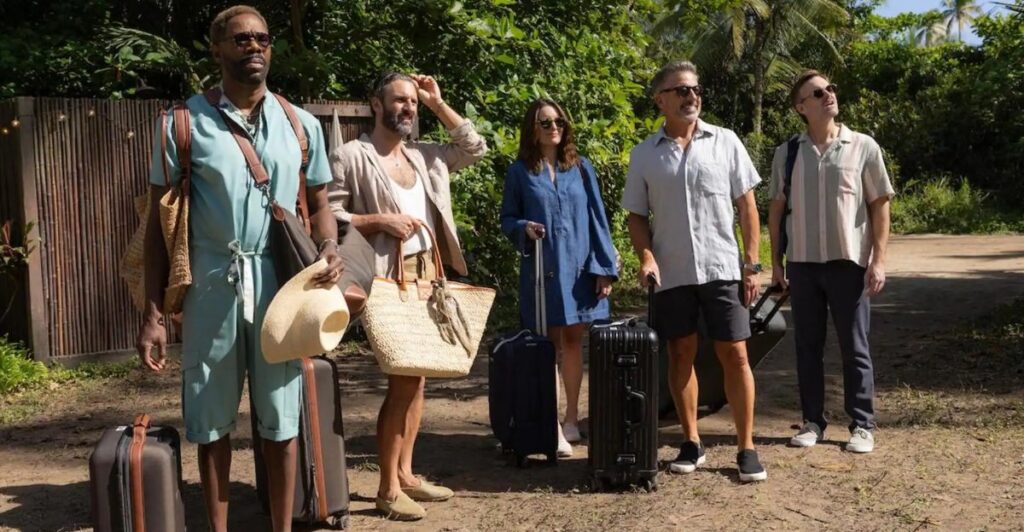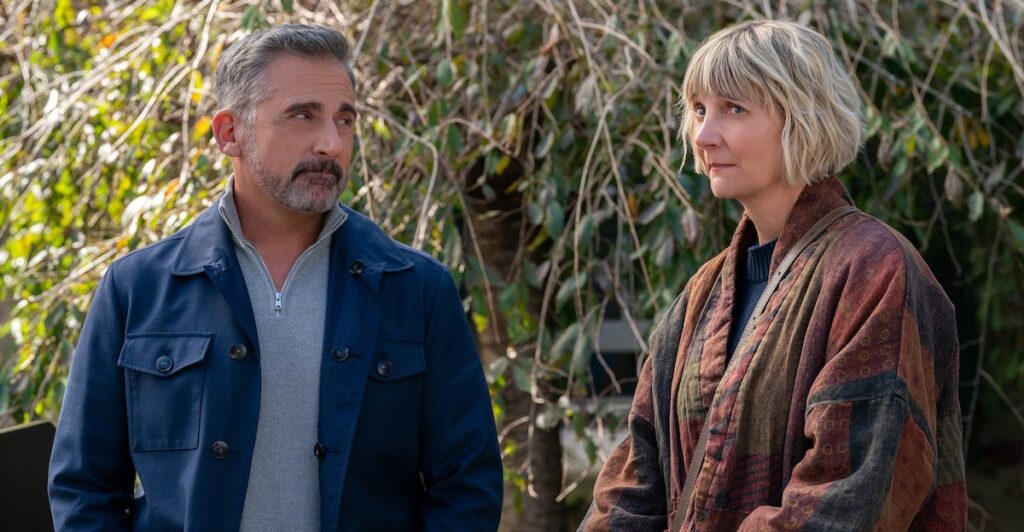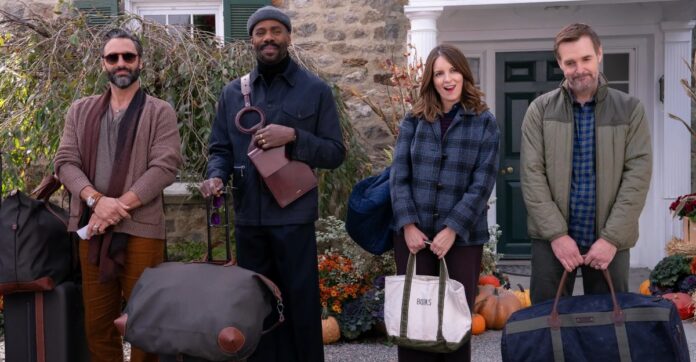What happens when you send toxic couples and dysfunctional families to holiday together at luxurious resorts? Is the outcome healing or heartbreaking? This fits the bill for ‘The White Lotus.’ Now, Netflix has added its feel-good spin on the thought with ‘The Four Seasons,’ tackling midlife woes and secrets in exotic locations.
The difference lies in the tone. While ‘The White Lotus’ puts repulsive characters in a vacation murder mystery, the Netflix offering takes a heartwarming route with its cynical group of friends and their journeys as they age. The result is gratifying and boasts of growth.
‘The Four Seasons’ Mixes Middle-Age Upheaval, Comedy And Vacations

‘The Four Seasons’ reimagines Alan Alda’s 1981 movie in the context of modern-day marriages. There are six long-time friends—three couples—who holiday together every year. Hence, the title of Four Seasons.
First, there’s Kate (Tina Fey) and Jack (Will Forte). They were college sweethearts and have lived what feels like a lifetime together. Yet, something is amiss in their marriage, which they try to avoid as much as possible. Kate feels like she is carrying the relationship, doing the needful, as her nervous wreck partner, Jack, just puts on a happy show for others. At one point, she says she wants the amazing version of him others get. But for Jack, he is loyal and caring. He feels attacked by Kate, and their opposing personalities dampen their love.
Related: ‘Mid-Century Modern’: Matt Bomer’s Old-Fashioned Sitcom Is The Hearty Gay Time We Deserve
The next couple comprises the very good-looking and charming Danny (Colman Domingo) and Claude (Marco Calvani). They are unabashedly queer and have an open relationship. What shakes their bliss is Danny’s health issues and Claude’s overzealous monitoring of his diet and lifestyle. There’s a sense of claustrophobia in this marriage, but their emotional connections beat everything.

Lastly, there’s the couple that splits up in the very beginning – Nick (Steve Carell) and Anne (Kerri Kenney-Silver). Yeah, this makes things awkward. The reason? Nick feels Anne doesn’t want to do anything. She is too chilled out and wants to sit in front of the television and play games. There is no romance or longing. Nick, on the other hand, is ready for the second innings of his life after sending his daughter to college. He even tries to reignite Anne’s professional ambitions, but she wants a slow routine in her middle age. It’s not lost on her that Nick has lost interest in their marriage. As a last resort, she tries to renew their vows on their 25th marriage anniversary. But that surprise burns up. Nick starts dating the 30-something Ginny (Erika Henningsen). Everything spectacularly falls apart after this.
The tight-knit group still vacations quarterly, clashes over the direction of their lives, and takes potshots at each other’s romances, but sticks together when it matters most. There’s a lot of warmth and humor in the friendship dynamics, but the comfort lies in the reminder that baggage isn’t always horrifying; it can lead to a place of hope, too.
‘The Four Seasons’ Is An Antidote To ‘The White Lotus’

At first glance, ‘The Four Seasons’ reminds of ‘The White Lotus.’ Here, too, wealthy people take off on weekend getaways that look like a dream. We see sunny beachside, cozy yet fabulous hotels, pool fun, bonfires, and even snowy mountains. Also, the show’s name connotes the real-life luxury hotel brand. But actually, the four seasons in Netflix’s comedy-drama refer to how seasons and moods change – spring, summer, fall, and winter. The evolution of the characters throughout the year is also a treat to watch.
While ‘The White Lotus’ built up the satire in a clearly wild manner (just think of that awkward incest angle in its third season), ‘The Four Seasons’ takes a grounded approach in its commentary on human fallacies. There is a moment of weakness, an unintended kiss between the most unlikely parties, but the resolution is relatable.
People feel insecure, they lie, they cheat, they waver, but they are also capable of a lot of grace. The show begs empathy for Nick, even after he leaves Anne and takes off on crazy adventures with his younger girlfriend. The friends struggle to strike a balance between respecting Anne and not abandoning Nick while accepting Ginny’s restless spirit. Of course, cutting this slack breaks open some cracks in their own bonds too. All the frustration leads to self-reflection. Preconceived notions are debunked.
In case you missed it: ‘Fellow Travelers’: The Real History Behind Heartbreaking Queer Love Story
As for Anne, she tries to act nonchalant, but she cares deeply. She still can’t hate her ex-husband with the ferocity of their daughter, Julia. But, she reconciles with her father after acting out quite embarrassingly. Nick tells her it’s okay if he hates her, but he wants to be happy. And, Ginny brought that to his life. She is not a caricature of a woman dating an old man for his money. Yes, there are countless cliché gold digger portrayals like that. But refreshingly, Ginny is fun, thoughtful, and nice. She truly believes Nick is her soulmate.
The other thing that’s common between ‘The Four Seasons’ and ‘The White Lotus’ is a major character’s death. The difference in intent is huge, and both shows are epic in what they are trying to do. However, it’s also about escapism; trying to fill a void with expensive trips, endless cocktails, and reciting memories of old, carefree times.
There is no malice or murder in the Netflix series, but there is a heavy loss that makes the group take an account of the present. And that heartbreak makes the story grounded. They take accountability and vow to make the most of their lives, rather than sulk at things that are beyond their control.
All in all, ‘The Four Seasons’ is a comforting series with funny banter, timely introspection, and healthy optimism. We change, we adapt, and our loved ones do too. The important thing is to communicate the emotions, laugh, cry, and continue the journey.





